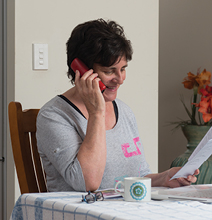
AGE has responded to the Commission’s consultation on the next EU Strategic framework for Health and Safety at Work 2021-2027. As society is ageing, health and safety at work becomes a key component to ensure older workers are able to stay active and healthy.
The last framework: adequate goals, but insufficient resources
The last occupational health and safety (OSH) framework (2014-2020) allowed to raise awareness via campaigns promoted by the EU agency EU-OSHA. AGE had participated in two campaigns, one on managing stress in workplaces and one on workplaces for all ages. The basic idea was very positive, however EU-OSHA lacked resources and funding to really scale up those campaigns and make them trickle down to many workplaces, especially small and medium-sized enterprises.
Growing psycho-social, musculo-skeletal risks should be addressed
Since the last OSH framework, awareness for some risks, such as psycho-social risks, has increased. Some burdens have grown heavier as well, as demonstrated by the high numbers of burnouts in farming professions linked to a combination of over-indebtedness and paperwork. In the context of the pandemic, the telework context has made it more important to raise awareness about the OSH precautions for working on screens in people’s homes. Some risks factors have grown, such as the risk of reduced eyesight.
Making occupational health and safety more inclusive
AGE called in the next OSH framework to tackle psycho-social risks by fully recognizing them as occupational risks – many EU member states still do not recognise burnouts and other psycho-social risks as (at least partial) employer’s responsibilities. AGE furthermore calls for a more intense effort to provide information to workers on musculo-skeletal disorders and how to prevent them. The specific OSH risks of socio-demographic groups, such as women, older workers and persons with disabilities, should be better included into the next framework. Rehabilitation and reintegration measures for workers coming back from longer sick leaves should be promoted as well. More information should be provided to employers about their requirement to provide reasonable accommodation to workers with disabilities, in line with the EU Employment Equality Directive (2000/78/EC).
AGE pointed out the risks linked to the platform economies., Many workers are considered self-employed and do not have the time to get familiar with the health and safety precautions, as they can very quickly become a platform worker and start with assignments instantly. The same is true for temporary and on-call workers.
OSH policy needs to be up to manage demographic change
Overall, AGE emphasised that demographic change should be better addressed in the next strategy, as many occupational risks intensify through longer exposure due to longer working lives. Risk mitigation approaches, such as job rotations, should be further promoted, not only to counter physical OSH risks, but also risks to mental health such as demotivation, which is an important decision factor for older workers to leave for retirement early.
Please find the full consultation response by AGE here.
For more information on AGE response to the consultation, please contact Philippe Seidel, philippe.seidel@age-platform.eu






